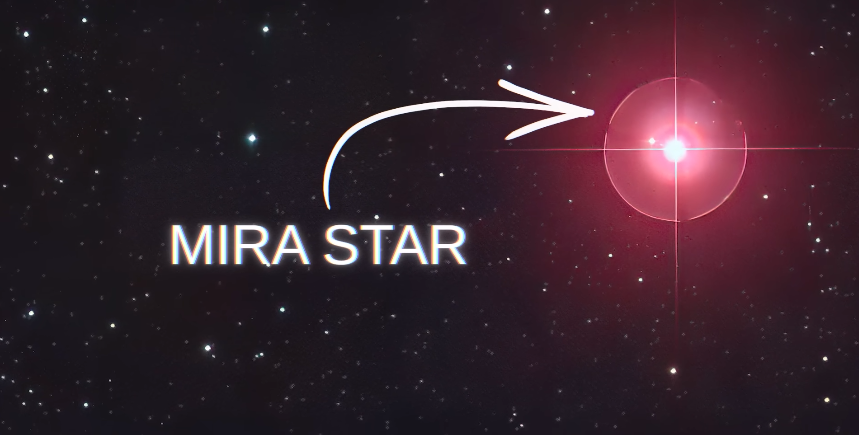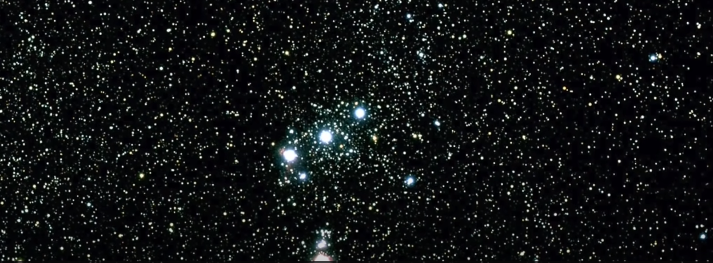CW Leonis is dying. In 2022, NASA observed a red giant star exploding along with a planetary system. According to NASA, it was a case of cosmic cannibalism in which every single planet there was destroyed by the destruction caused by the explosion of the star. But this star was far away from us. The same process is now dying with CW Leonis. This CW Leonis star is also far away from the Betelgeuse Star. The CW Leonis star is in the last stage of her life.
CW Leonis Star
If the CW Leonis star explodes, can we expect that new planets or new new objects will be formed in the surrounding area, there may be possibilities of life on them or not! At present, CW Leonis is throwing out four Pluto-sized masses every year. Now the CW Leonis star is so massive that if we replace it with our Sun, it would have a radius of about 1000 times the orbit of the Sun. Due to this star being in its death stage, it is constantly dimming or brightening and increasing in size. Because of this brightness, CW Leonis was first seen in 1969.
In fact, Eric Becklin Astrophysics was doing his routine observations at mount Leo Consolation one night when he saw a bright star. It was a star that periodically dimmed and brightened. But due to the lack of advance technology at that time, Eric could not collect much information. When they matched the observations data with the data they collected, they found that the behavior of this star is similar to a Red Giant Star.
Stage of Dying Star
The Red Giant Phase is the final stage of the death of any star, after which the star explodes with a big bang, also known as the Nebula Stage. The nebula stage is when any star explodes. Such a dying star was first observed in 1596 when German astronomers were searching for the planet Mercury in space. And they saw a planet and what they thought was Mercury but later on they found out that it was Jupiter and not Mercury. So they tried to find Mercury again but this time they chose a Mira Star for correct observation.

They chose it because this star can easily tell the difference between Mercury and Jupiter. And this red is because it was easily visible in the sky and cannot be confused with any other star. Because of this star, he made new observations in August, but as October came, he saw that this star suddenly dimmed and disappeared, but in February of the next year, that star was visible again. This led them to know that the star is in its final stage, called the Red Giant Stage.

This is a picture of the same star captured by the Hubble Space Telescope and you can see how strange it is. After studying such stars for 600 years, it was found that these stars are in their final stages and the gass cloud around them is growing. Due to this gass cloud, this star is becoming dim bright after every 649 days.
Angelo Secchi invented Spectroscopy. With the help of this spectroscopy technique, when he saw the Mira Star with the help of his observation, he found out from the spectro line analysis that the amount of carbon in this star is very high, that is, a new A type of star was discovered which was named Carbon Star. But now our Red Giant Star who is currently dying CW Leonis also falls in the same category. CW Leonis is a star that will not end life after death but will bring new life revolution.
NASA planned to send Apollo 11 into space for new research that could help us learn more about life in space.
How Life Possible At Carbon Stars
According to NASA’s study, the children of carbon stars are the ideal biological hotspots for planetary nebulae, which has also been proved by some experiments. In this experiment, NASA’s bio team recreated the same conditions in the laboratory as in the interior of a carbon star. Then injected carbon-hydrogen molecules and nitrogen compound into it, then analyzed the whole mixture with the help of radiation. From this they found that nitrogen compounds are converted into Amino Acid (new life forming).
If we talk about CW Leonis Star, its nebula experiment is a step ahead of this experiment. Scientists found that in this experiment there are compounds like Amnonium (NH4), Water (H2O) and Iron (Fe). Scientists believe that stellar winds come out of stars like this, which means particles emitted from stars.
How Red Giant Convert into Carbon Star
If the mass of a star will be between 0.5-8 solar masses, then according to our current theory, that star will burn all its hydrogen and enter the red giant, after which the helium core and outer shell will be left in it. It swells to a thousand times its original size and after a star becomes a red giant, its temperature becomes 2200 to 3200 degrees and the temperature of the helium of its core is 9.9×107 C. With such a temperature, the core could collide and fuse between the stars.
Which means that the star does not have helium fusion due to which an imbalance is created between the star’s gravity and pressure due to which the star collapses in its own core and bounces back. Which is why we see stars like CW Leonis dim and bright.

But in this cycle there is a phase when that star is almost going to become a black hole and then just before it starts to do helium fusion before it becomes a black hole.
What actually happens is that with time, all the hydrogen of the star is converted to helium, and the already helium increases the mass of the core, due to which gravity compresses the star core even more, and after that, the quantum mechanism begins to appear in the core of the star. Electrons from them are ejected and form a protective covering around the star. Because their electrons prevent the star from turning into a black hole by composing the gravitational impulse with the electron repulsion.
Helium in this star begins to fuse through the triple alpha process. In this process, first two helium atoms fuse to form beryllium 8, then this atom is highly unstable and changes within seconds of its formation. makes That is, the triple helium fusion that takes place in these stars is the main source of all carbon atoms and this process is so fast that it takes millions of years to make helium from one hydrogen, while the process of making carbon from one helium is completed in ten thousand years. We call it Helium Flash.
By researching this sub-study, we have come to know that the core of CW Leonis is not massive enough to heat up to the ideal condition of carbon fusion. So stars like CW Leonis which can only fuse atoms to carbon are what we call carbon stars. And according to our current stellar model, the CE Leonis star will turn into a white dwarf after its death, which will continue to shine for 10 billion years and later become a black dwarf.

